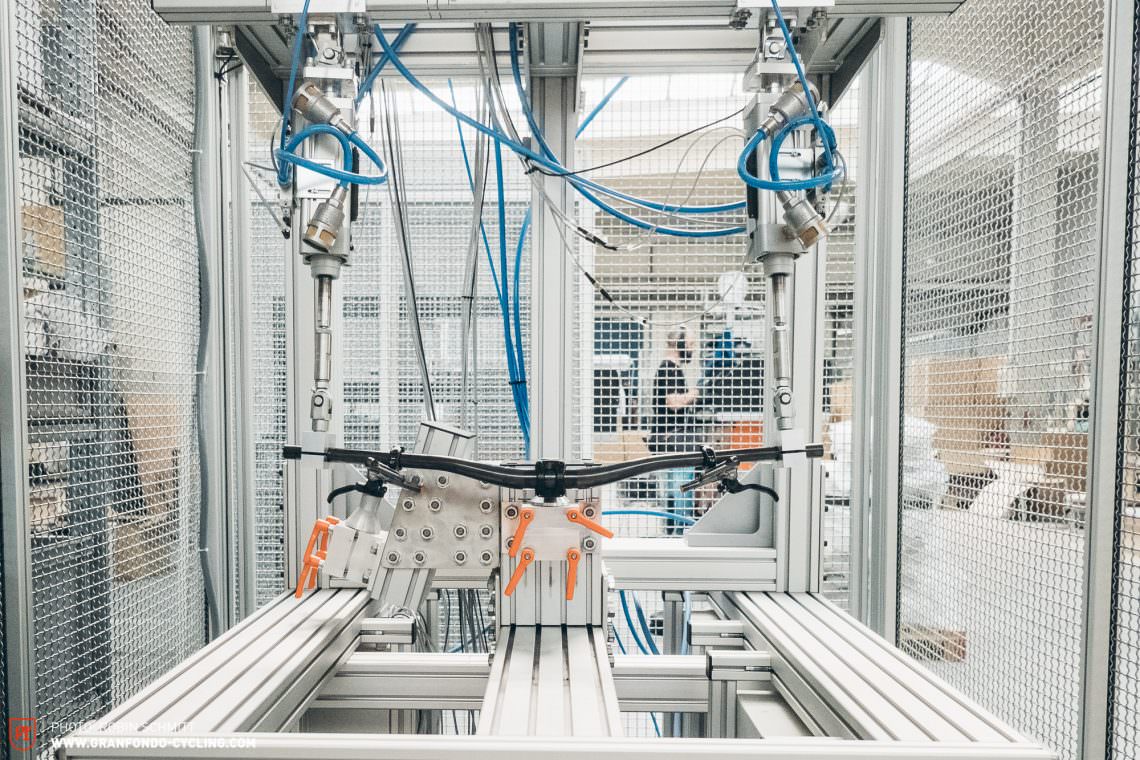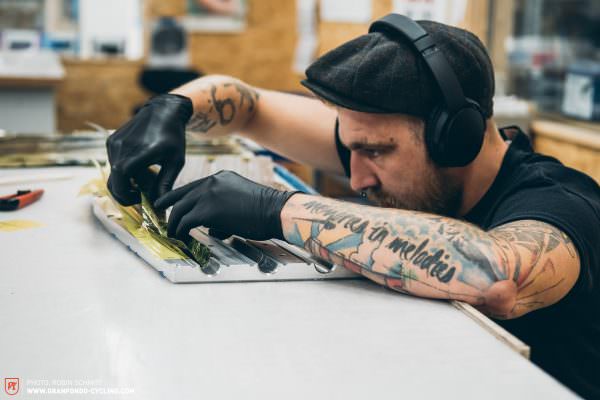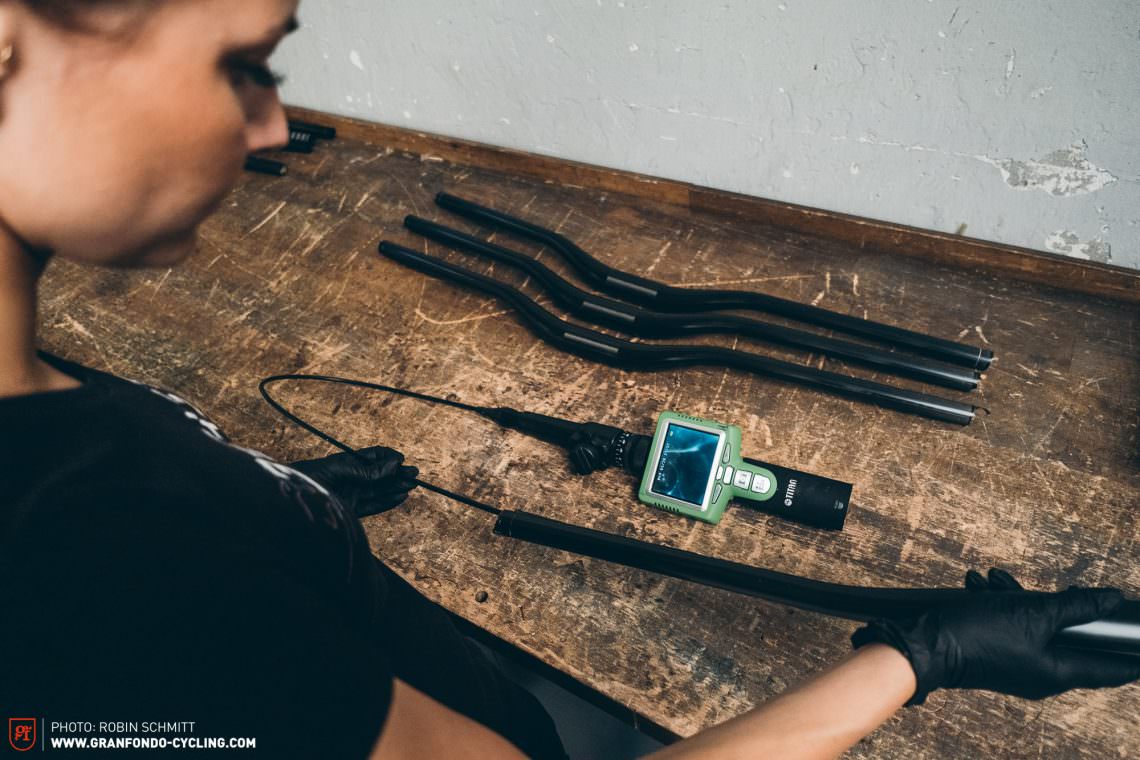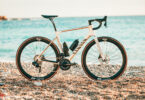Winning a total of four awards last year, startup Beast Components was by far the most successful brand at the 2019 Design & Innovation Awards. Read on to find out more about what drives the brand forward, how its carbon components are manufactured and what Beast have got to do with NASA, wheelchairs and urban air mobility!

“Did Mirko give me the correct address?” After six hours of driving, I roll into the yard of an old World War I munitions factory, keeping a lookout for Beast. I spot the signs of numerous companies, but there’s no trace of who I’m here for. The security guard is kind enough to help me: I have to go to Black East, the company behind the Beast brand. Finally, I meet Mirko, the founder of Beast, and he tells me the story about how his company, or rather companies, came into life.


In 2013, Mirko founded the company Carbo Life after a friend was paralysed in a motorcycle accident. His idea was to produce high-tech components for wheelchairs that significantly improve the lives of those who rely on them. Based on the success of Carbo Life, Black East GmbH was born three years later, using Carbo Life’s manufacturing and carbon know-how to manufacture its first bike components under the Beast brand name.
Mirko himself studied at the TU Dresden, one of the world’s leading institutions for carbon and lightweight construction, though he eventually dropped out of his PhD to found Carbo Life. Mirko comes from a family of entrepreneurs and was previously involved in numerous projects at the Institute for Lightweight Design in Dresden so sooner or later, self-employment was bound to be the logical next step. Incidentally, his current business partners with whom he founded his third company, Realize Engineering Dresden GmbH, come from the same institute. Mirko’s fellow student from the time, Thomas Bartl is the company’s Development Engineer as well as handling the accounts and day-to-day organisation.Their former lecturer at the TU Dresden, Dr Andreas Freund, is Managing Director, Mastermind and Salesman all rolled into one.

Why would they choose self-employment with all the entrepreneurial risk involved over well-paid jobs in the industry? I find out the answer during lunch with Mirko as we philosophise about corporate responsibility and the value of money. While you usually earn significantly more in big corporations, even as a senior engineer, you’re a small cog in the system and more or less limited in your freedoms. Mirko, Thomas and Andreas had already settled down and started their own families in Dresden during university and by founding the three companies they took their lives into their own hands, creating a balance between fulfilling work, self-realisation and family life. It is not the maximisation of profits that is the priority, but satisfaction with one’s work as a whole. Mirko points out that most brands today are focussed on developing and selling new products but that you’ll be hard-pressed to find much involvement in the production process itself or in-depth analysis of production and quality control. “In our lightweight centre, we not only had to design and manufacture a product, we also had to build our own testing rigs to see what the products are capable of. Very few brands actually know what their products are able to withstand.” As we continue to talk, the entrepreneurial pride Mirko has in creating local jobs that offer fair working conditions and giving something back to the region becomes more and more obvious.


The Dresden based team is no less proud of its unique skill set, which it applies to more than just the bike industry. Although Beast have developed unique carbon fabrication processes, their core competence is in the engineering and simulation of components. Talk to Mirko’s business partner Andreas about it and you’ll hear him use terms like orthotropic elasticity, strain rate and temperature dependencies for highly dynamic analyses, which all form part of their calculations. He programs his own subroutines and is a very sought-after man. As a result, he’s been a part of numerous aerospace and space program projects throughout Europe and North America. More recently, Realize Engineering, have worked together with an air taxi start-up on simulations that has been causing a sensation in the media.

Mirko shows me just how accurate the simulations are while testing a handlebar. As we stand in front of the test rig, we look at the calculations which say the handlebar will break at a load of 4,740 Nm. The load steadily increases until the bars give way. The test rig readout says 4,738 Nm! That’s pretty damn accurate.
“Thanks to our significant level of in-house production we achieve very rapid prototyping. Combined with our simulation know-how, Realize Engineering is an excellent service provider for the fast, efficient and cost-effective development of demanding projects,” Mirko explains.

Due to the large number of different projects in different industries the team experience as part of Realize Engineering, they’re constantly learning and staying at the cutting edge of technology and production techniques. In turn, this can feed back into the designs and engineering that go into Beast Components.



Carbon and ice cream
As spectacular as the projects on which the Dresden based company works are, so inconspicuous are their production facilities. The romantic-industrial flair of the old munitions factory is characterised by a relaxed atmosphere. Instead of a clinically clean, high-tech and automated environment, there’s a lot of skilled manual labour going on. Nevertheless, the production process uses very modern techniques, such as the extraction process or their carbon climate-control. The Beast team comprises 14 employees who produce all components in house.



The top compartment of the freezer doesn’t have a high priority for carbon component production, but it’s a top priority for employee motivation – delicious, ice cream!
The manufacturing process of the carbon components begins with a trip to the freezer. Alongside the drawer reserved for ice cream cones for the employees, this is where small batches of cut and labelled carbon sheets for the different bike components such as handlebars, stems or saddles are stored at -18° C.




The individual layers are then taken to an air-conditioned room to be placed in the moulds by hand and given an ID number to be added to the manufacturing protocol. It takes 1–2 minutes to place each layer exactly where it needs to be. Unfortunately, we weren’t allowed to photograph the proprietary manufacturing processes of the carbon rims and the saddles.

Subsequently, the carbon sheets are vacuum bagged in the mould to compress the layers and remove any air that may be trapped between them – this would cause irregularities in the final carbon structure when they’re cured in the oven, rendering the component unusable.



This oven isn’t for baking cakes, but carbon components: carbon rims in this case





Thanks to the close proximity of the production, testing and development team on-site, updates and new features can be implemented quickly and easily. And it seems that the team enjoys a lot of freedom. It almost seems like their factory is a playground for trying new ideas. Mirko confirms, “Children are the best engineers.” Of course, he doesn’t mean child labour, but a call to remove the blinkers and see things more clearly. “Open your mind and try to think freely! Because this is the only way we can create new and innovative things.”
The fact that Beast not only produces outstanding products but also produces them locally at competitive prices in these times of globalisation shows that Mirko lives up to this motto. The right material at the right price in the right place – the Dresden model is as much a part of the recipe for success as the high-tech simulation and unique manufacturing processes.
We’re excited to see the road that lies ahead of Beast. Who knows, maybe they’ll partner up with a bike brand to develop a new frame? The fact is, we’re impressed by this startup and its entrepreneurial accountability, explosive mixture of pragmatism and forward-thinking and its aspiration not only to make money but above all to add value to the industry!

Did you enjoy this article? If so, we would be stoked if you decide to support us with a monthly contribution. By becoming a supporter of GRAN FONDO, you will help secure a sustainable future for high-quality cycling journalism. Click here to learn more.
Words & Photos: Robin Schmitt







